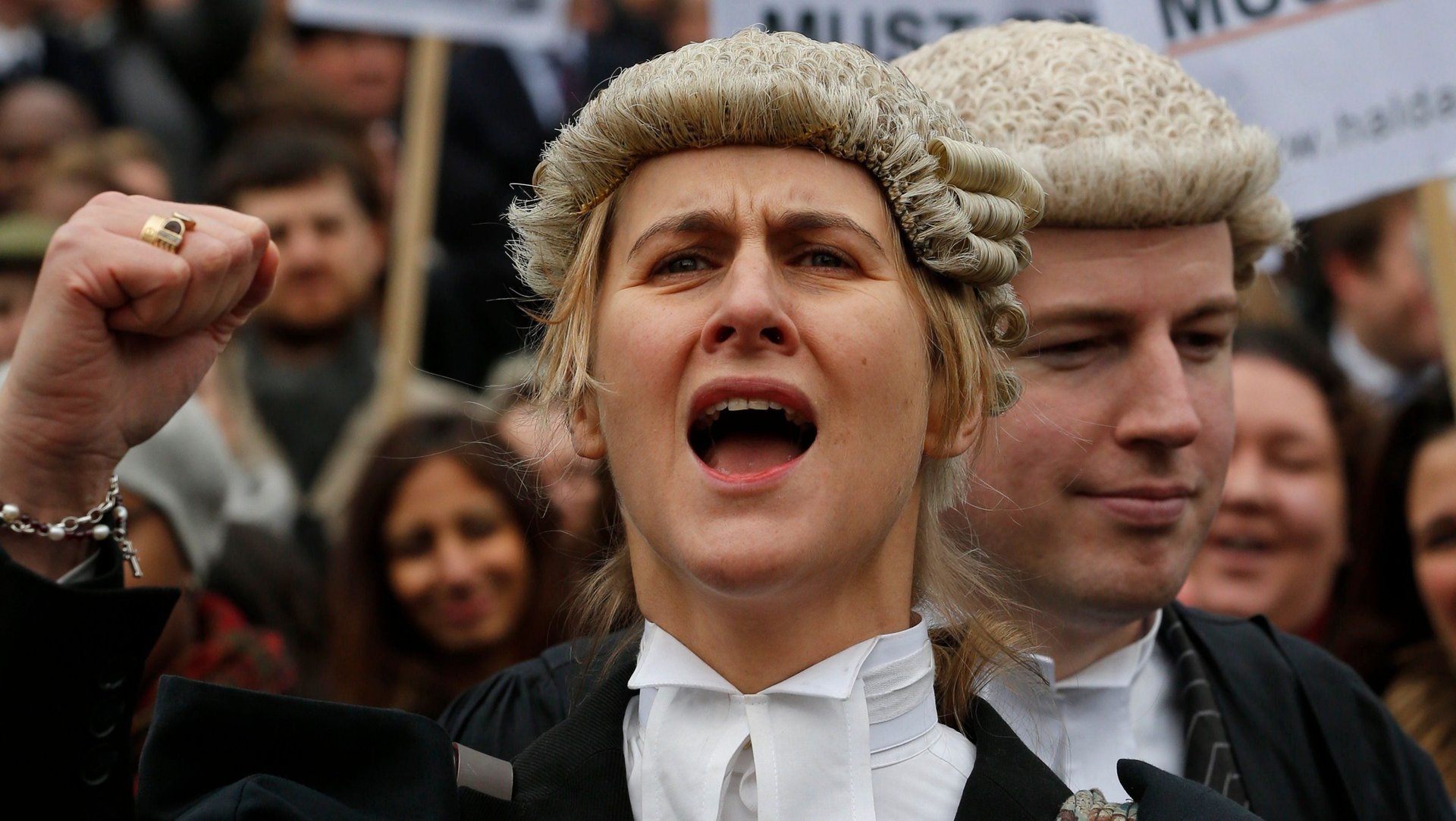Young British lawyers are told not to wear short skirts or “kinky boots”
BPP University Law School in London considers its exams a test on all aspects of practicing law. Students are docked points for answering questions wrongly, but also for failing to conduct themselves as professionally as they would in court. According to a school manual leaked to the website Legal Cheek, students can lose points for anything a judge might frown upon in a courtroom: slurping from a water bottle, forgetting the judge’s name, or addressing the judge with hands stuffed in pockets.


BPP University Law School in London considers its exams a test on all aspects of practicing law. Students are docked points for answering questions wrongly, but also for failing to conduct themselves as professionally as they would in court. According to a school manual leaked to the website Legal Cheek, students can lose points for anything a judge might frown upon in a courtroom: slurping from a water bottle, forgetting the judge’s name, or addressing the judge with hands stuffed in pockets.
There’s also a whole list of penalties for violations of the legal profession’s famously traditional dress code. Non-black shoes for men are a no-go, as are suits in any color beyond the somber tones of dark grey, dark blue, or black. BPP isn’t the only UK law school to stress how dress and mannerisms could affect a lawyer’s performance. As the Telegraph pointed out, the University of the West of England also deducts points on law student exams for violations from messy hair to wearing trainers (sneakers).
The law schools’ guidelines simply codify what have been long unspoken rules about how both men and women should appear in a professional setting. Some are reasonable, others less so, particularly when considering the double standard the guidelines seem to reinforce.
Take BPP’s code: Men who stroll in with the top buttons undone on their shirts lose two points, but women who arrive in a similar state lose up to three points “if bra shows.” A short skirt is docked two points, while short trousers lose one. A man in “colorful socks” loses one point; a woman wearing the forbidden combination of boots and a short skirt loses three. The oddly detailed prohibition on “kinky boots” for women—which the guide describes as those featuring “stiletto heels, buckles, straps etc.”—seems to say more about the preferences of the individual who wrote the guidelines than what’s professional.
No visible knees in the office is perhaps a fair policy, but shouldn’t a man who comes to work in daringly short shorts be penalized the same as his colleague in a miniskirt? Is a hint of brassiere inherently more offensive than the sight of a hirsute chest?
Women typically get far more scrutiny than men for their workwear choices. And as Quartz At Work’s Leah Fessler has pointed out, dictating workers’ attire is both insulting and unnecessary. Over the objections of her human relations department, General Motors CEO Mary Barra insisted that the company’s dress code be no more than two words: “Dress appropriately.”
“If they cannot handle ‘dress appropriately,’ what other decisions can they handle?” Barra has said. “And I realized that often, if you have a lot of overly prescriptive policies and procedures, people will live down to them.”
Anyone with the ability to defend a case in court should be able to manage dressing themselves before they get there. It seems BPP may be ready to rethink some of these guidelines as well.
“It is exceptionally rare that any student is ever penalized in an assessment for any of the infringements listed,” a spokesperson told the Telegraph. “The list has not been revised for a long time, and will be reconsidered before the next publication.”